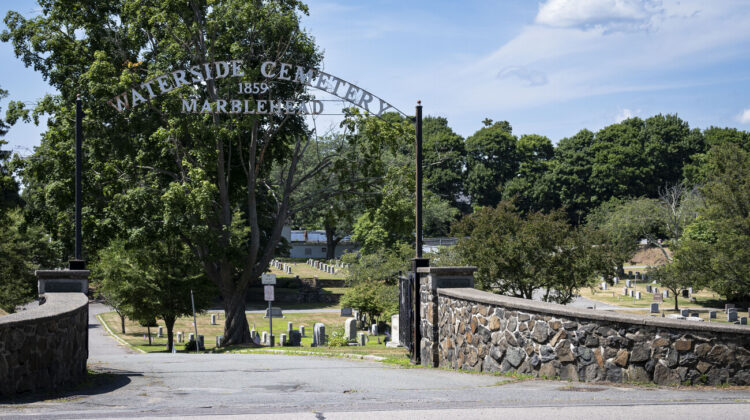In these articles, I usually discuss places where people live or in other ways carry out everyday life. Sometimes, I recount stories of the people who lived in these buildings.
But what about places where people do not live, but instead reside after they die?
294 West Shore Drive, Waterside Cemetery, is not as busy as Washington or Tedesco streets, but it holds more people and stories than both roads combined.
There is no way that I could tell the stories of all who are buried in Waterside Cemetery, so instead, I will tell you about how the cemetery came to be what it is today.
It is important to note that, for most of human history, we have housed our dead. Some scholars theorize that even before the living had “houses,” our dead did. The cemetery as we know it now — that is, a green space dotted with monuments that mark the remains of individuals and families — is relatively new.
Think of the Native American burial mounds built in pre-Columbian times, the pyramids of Egypt, and even the small, often exclusive and worn-down graveyards connected to churches in Europe.
Waterside Cemetery, in its sprawling expanse of nearly 46 acres, its dull rainbow of granite and marble stones, and its quiet gazebo, is nothing like these.
According to the Massachusetts Cultural Resource Information System document on Waterside Cemetery, the land that would become the cemetery used to be farmland.
The town pieced together land for more than a century, starting in the 1850s and ending in 1963, in order to create today’s cemetery. Though not formally dedicated until 1859, there is a death dating back to 1806 in the cemetery.
The first acquisition was in 1857, when the town acquired “a large parcel measuring roughly 450 by 1000 feet abutting Salem Harbor to the northwest from Benjamin Hawkes.”
The second acquisition came from landowner Isaac C. Wyman in 1890. The conveyance stated, “…representing that a necessity exists for the enlargement of the burial ground now existing and belonging to said Town of Marblehead known as the Waterside Cemetery… to be kept forever as such.”
An April 1, 1888 plan of the Wyman and Bessom estate, filed in 1890, contains the note, “… taking of the land by Town of Marblehead for burial purposes, recorded libro 1298, folio 421.”
The next purchase listed in the MACRIS document is one that took place around the turn of the 20th century. The land acquired was 4.91 acres, and this made up what is now Harbor View Cemetery just down the street.
In 1947, another swath of land was acquired and, as of 2022, it was undeveloped. In 1961, another three-quarter-acre parcel of land was acquired.
But graves and hills are not the only things at Waterside Cemetery. There is also the Dr. Arland A. Dirlam Chapel with a nondenominational sanctuary and a columbarium, a structure built to memorialize the remains of the dead.
A tower, nearly three stories tall, is dedicated to Benjamin A. Woodfin. A plaque on the tower reads, “the families of Marblehead…for his years of devotion to the Cemetery Department from 1951 to 1998; dedicated Memorial Day 1998.” Southeast of the tower is the Hourglass Pool.
For more than 200 years, Waterside Cemetery has served Marbleheaders as a place to not only lay deceased loved ones to rest, but also to spend their time mourning in a landscape that reflects the beauty of life itself.
Waterside Cemetery, as public cemeteries are intended to, reserves a place for residents in the communities in which they lived, and simultaneously gives community members a place where they can publicly express grief.
As Robert P. Harrison wrote in his book “The Dominion of the Dead,” “For as long as we think of our houses, cities, and nations as merely places to live, and not as places to die, those houses, cities, and nations can never become homes or take their stand within the limits of containment from which all shelter and placehood ultimately derive.”

